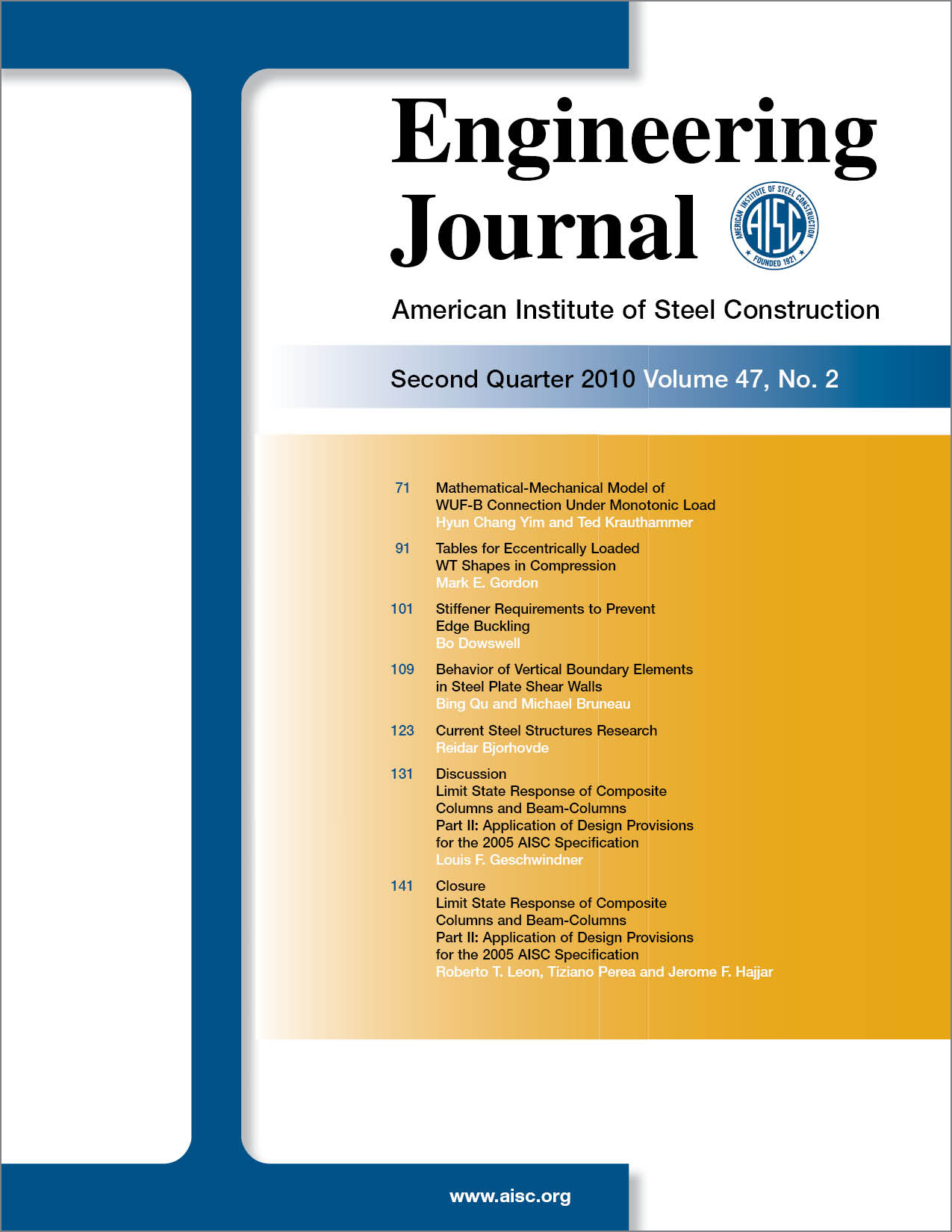Behavior of Vertical Boundary Elements in Steel Plate Shear Walls
DOI:
https://doi.org/10.62913/engj.v47i2.977Keywords:
steel plate shear walls, vertical boundary elements, shear yielding, out-of-plane bucklingAbstract
The AISC Seismic Provisions and CSA S-16 Standard require a minimum moment of inertia for the vertical boundary elements (VBEs) in steel plate shear walls (SPSWs) to avoid undesirable VBE behaviors. The equation limiting VBE flexibility has been derived from a flexibility factor, , developed in plate girder theory and the limit on VBE flexibility has been empirically specified based on previous test results. This paper reviews the derivations of the flexibility factor and how that factor was incorporated into current code design requirements for SPSWs. Then, analytical models to prevent VBE shear yielding and to estimate the out-of-plane buckling strength of VBE are developed, followed by a review of past experimental data to investigate if the significant inward VBE inelastic deformation and out-of-plane buckling observed in some instances were due to excessive VBE flexibilities or other causes such as shear yielding at the ends of the VBEs. It is shown that the existing limit on is uncorrelated to satisfactory in-plane and out-of-plane VBE performance. The proposed analytical models predict performance of previously tested SPSWs that correlates well with the experimental observations.

